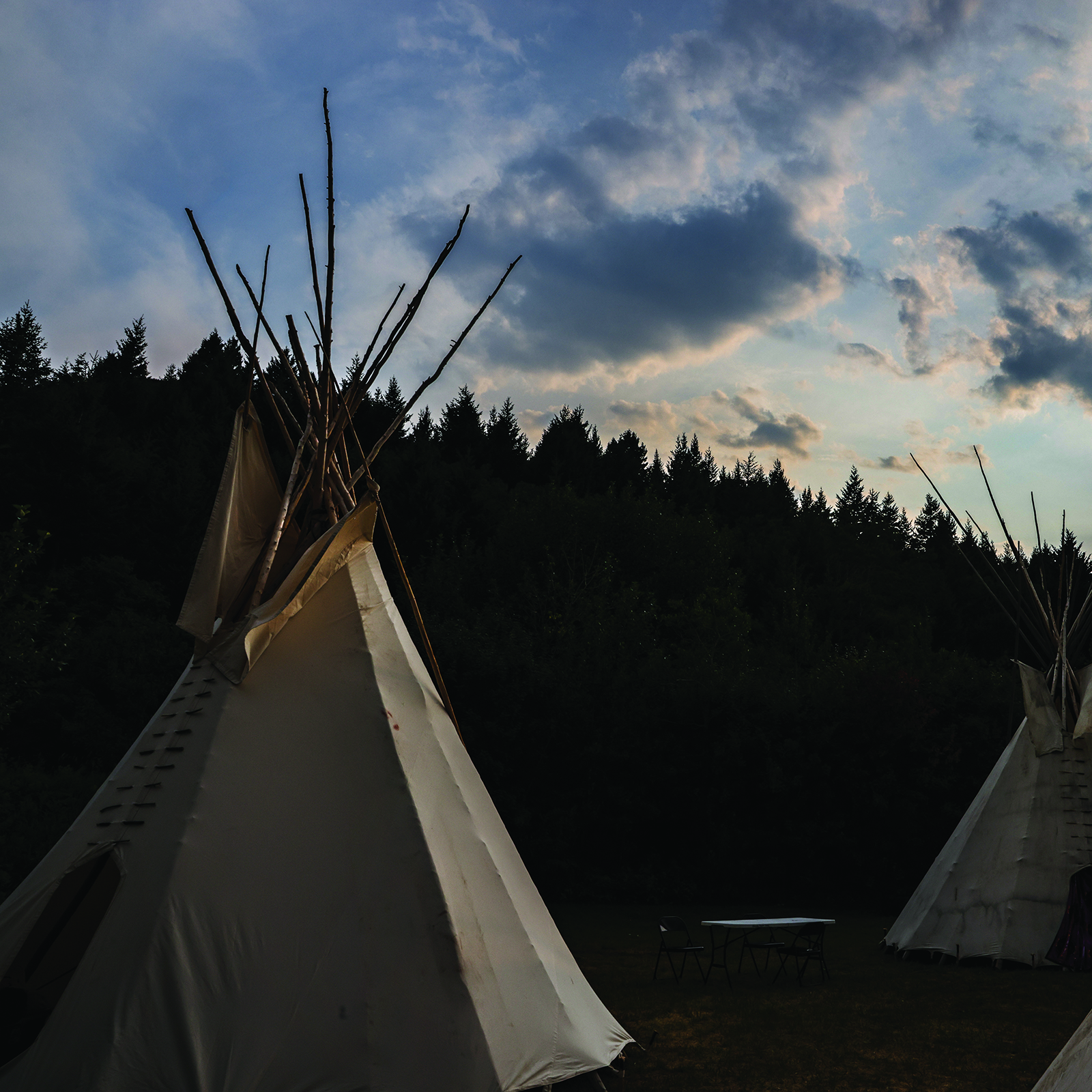On a smoky summer evening in late July, the ragged peaks and rough contours of the Badger-Two Medicine framed a traditional Blackfeet camp situated along the eastern slopes of the Rocky Mountain Front. Alden Spoonhunter, wearing moose-hide moccasins and a breechcloth, which he brain-tanned and hand-beaded himself, stepped through the entrance to his tipi and quietly surveyed its distinct four-poled construction. His nephews, ages 19 and 21, had spent the day assembling the conical lodgepole shelter, and now they stood on either side of the doorway, shifting with nervous anticipation.
After a few fraught moments, Spoonhunter nodded his approval, and his nephews relaxed, rejoining the other young campers outside.
“People just assume that because you’re Native, you know how to set up a tipi, but that’s not the case at all with our younger generations,” Spoonhunter, 38, explained. “We need to pass this traditional knowledge on to our future generations. Otherwise it will be forgotten.”
Like the other Blackfeet Nation tribal members who spent the week here at Birch Creek, conducting a “culture camp” for Indigenous youth, Spoonhunter is acutely aware of how easily the forgetting can occur. There is no central repository for Blackfeet spirituality, language or cultural practices — sacred traditions that are handed down and taught to future generations by tribal elders, whose vulnerability has been recently underscored by the pandemic, and compounded by centuries of systemic cultural persecution. Many of the elders who attended the camp this summer were too frail to join the horseback rides, stick games and other traditional Blackfeet activities that filled the days, and instead sat resting in the shade as groups of children set out on nature hikes to learn about native plant species and their traditional uses; or received instructions on how to manty a horse and set up a spike camp; or practiced rendering bison tallow and field dressing a deer.
Those are traditions that still come easily to Spoonhunter, who has spent much of his life navigating the intersection of contemporary and traditional lifestyles, dividing his formative years between beading and basketball, powwows and parties — all of which helped define his prominent role today as a tribal mentor widely respected and admired by Blackfeet youth.
Not only did Spoonhunter earn an everlasting degree of cachet as a teenager, when he led the Browning Indians to a state basketball championship in 2001, but he’s remained involved in the youth basketball scene, and teaches art at the Blackfeet Community College. He’s also a single father raising two daughters, ages 8 and 10, and runs a sports apparel business, selling items like baggy “Native Baller” shorts emblazoned with traditional Blackfeet designs.
And yet, Spoonhunter is equally comfortable camped out for a week in the rugged mountains with his family, surrounded by the natural landscape where Blackfeet derived much of their spirituality.
“This landscape represents me and my people, and it’s under threat,” he said. “We want everyone who’s tried to take this away to know that we’re still out here. We utilize this area of our traditional territory. We don’t just talk about it. We’re not just relics of the past. We’re still out here.”
In order to remain out here, Spoonhunter said, more Blackfeet youth must rise to the occasion and learn traditional Blackfeet practices, including hunting and horseback riding, but also beading, which Spoonhunter learned from his mother when he was 8 years old, as well as dancing, drumming and singing.
“I never set out to break any stereotypes,” he said. “But I’m a single father raising two daughters who beads and dances. But I also know how to pack horses, do ranch work and fight fires. I’m a man, and our younger generations need to realize that they can be confident as men and still practice their culture and traditions.”
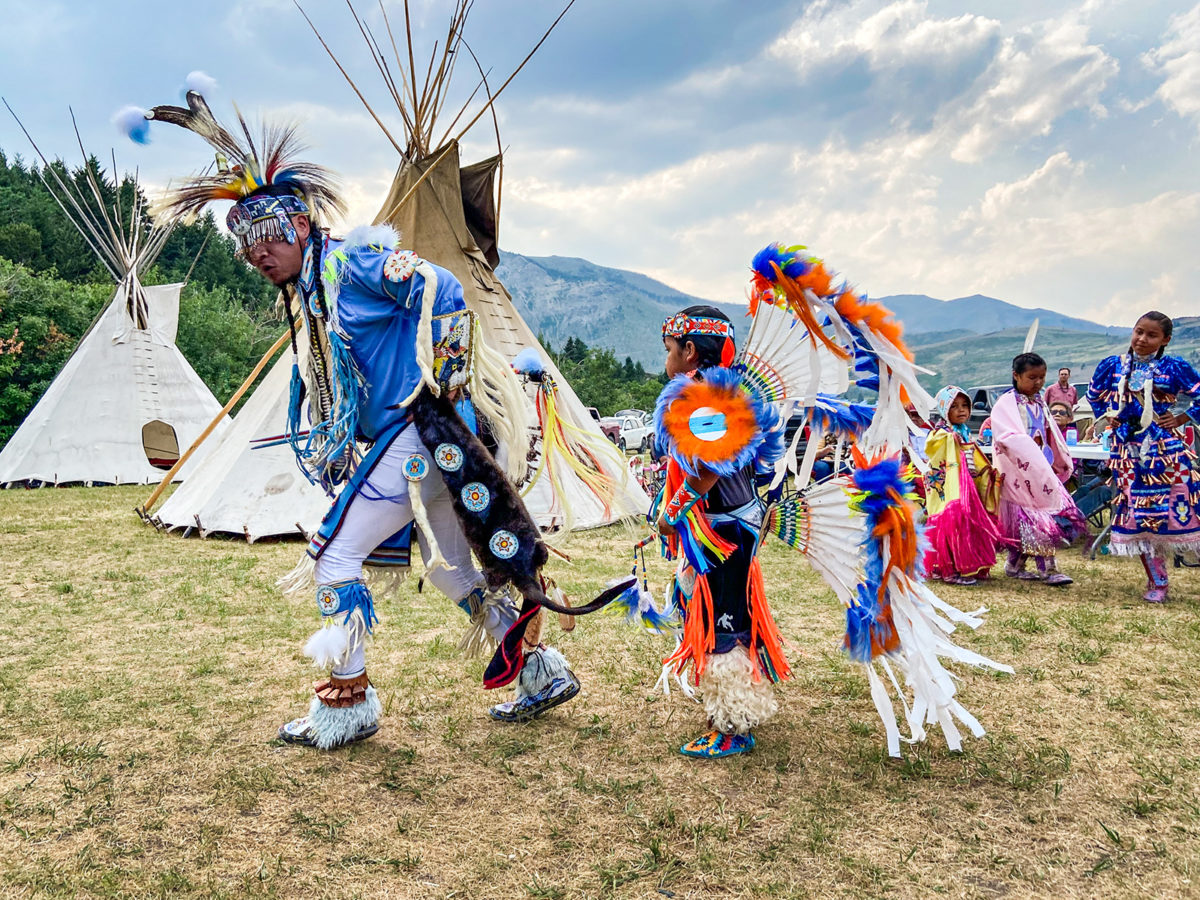
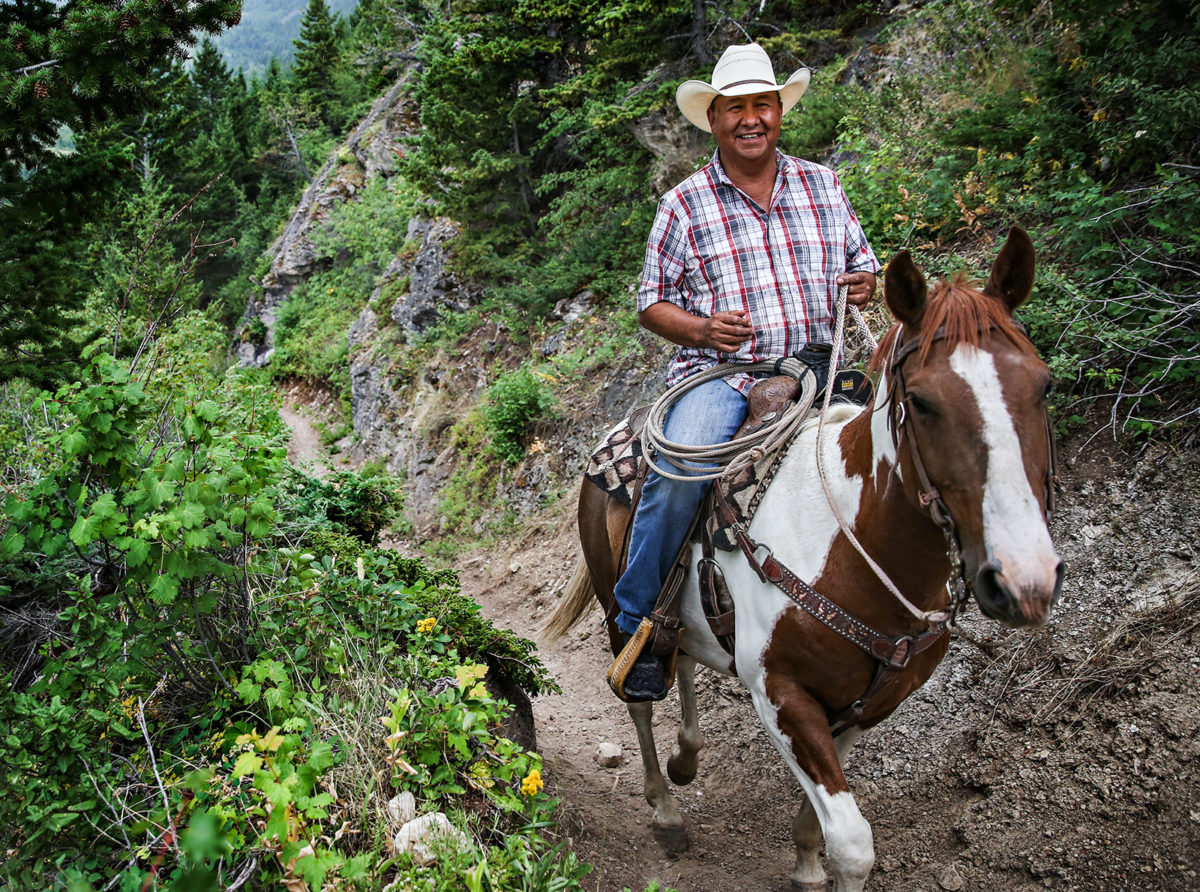
The vitality and resiliency of Blackfeet culture has been tested before — by government-imposed assimilation policies, broken treaties, development pressure, military massacres, and diseases like smallpox — and yet it’s always prevailed. For years, tribal leaders sounded an alarm that their culture was on the cusp of blinking out, but now, due in part to the resurgence of the culture camp, and of mentors like Spoonhunter, the Blackfeet appear to be mounting a cultural renaissance.
“It’s a very fragile situation, and it’s also very exciting,” John Murray, who has served as the Blackfeet Tribal Historic Preservation Officer for more than two decades, said. “Our elders are our gatekeepers. They know our language and our songs and they exchange sacred gifts through ceremony. And they are the most vulnerable. We stand to lose a lot if we don’t continue to practice our culture. But our young people are standing up and speaking out.”
Still, the consequences of history continue to ripple through the Blackfeet Indian Reservation today, and many tribal members fear their cultural values will be further eroded, not only because their most vulnerable and cherished community members are aging, but because of the looming threats to the landscape, including climate change and resource extraction.
“We want to make sure that our connection to this landscape never ends,” said Terry Tatsey, a former natural resource studies professor at the Blackfeet Community College in Browning, who in the 1990s guided young people on camping and hunting trips in the Badger-Two Medicine. His goal was to teach traditional skills surrounded by a place redolent with Blackfeet spiritual presence — the tribe’s creation stories emanate from the Badger-Two Medicine.
“It’s all about practice and continuing who we are as a people,” Tatsey said. “But it’s also about protecting this place from outside threats.”
Chief among those threats are the lingering effects of decades of energy exploration, which dates back to the Reagan-era leasing of public lands to oil and gas interests. For more than 30 years, American Indians have tangled with the federal government over plans to industrialize the landscape on behalf of private oil and gas companies. Despite numerous overtures to negotiate — to buy the leases, or to swap them for leases in other areas with less cultural significance — one company has declined to discuss anything short of full industrial development on the Badger-Two Medicine, including roads, gas wells and oil fields. As a result, the tribe is now insisting in court that all of the remaining leases be canceled, just as the government has done elsewhere when leasing arrangements were made without consulting the Blackfeet.
Increasingly, a cadre of younger tribal members is recognizing they’ll likely have to continue the fight.
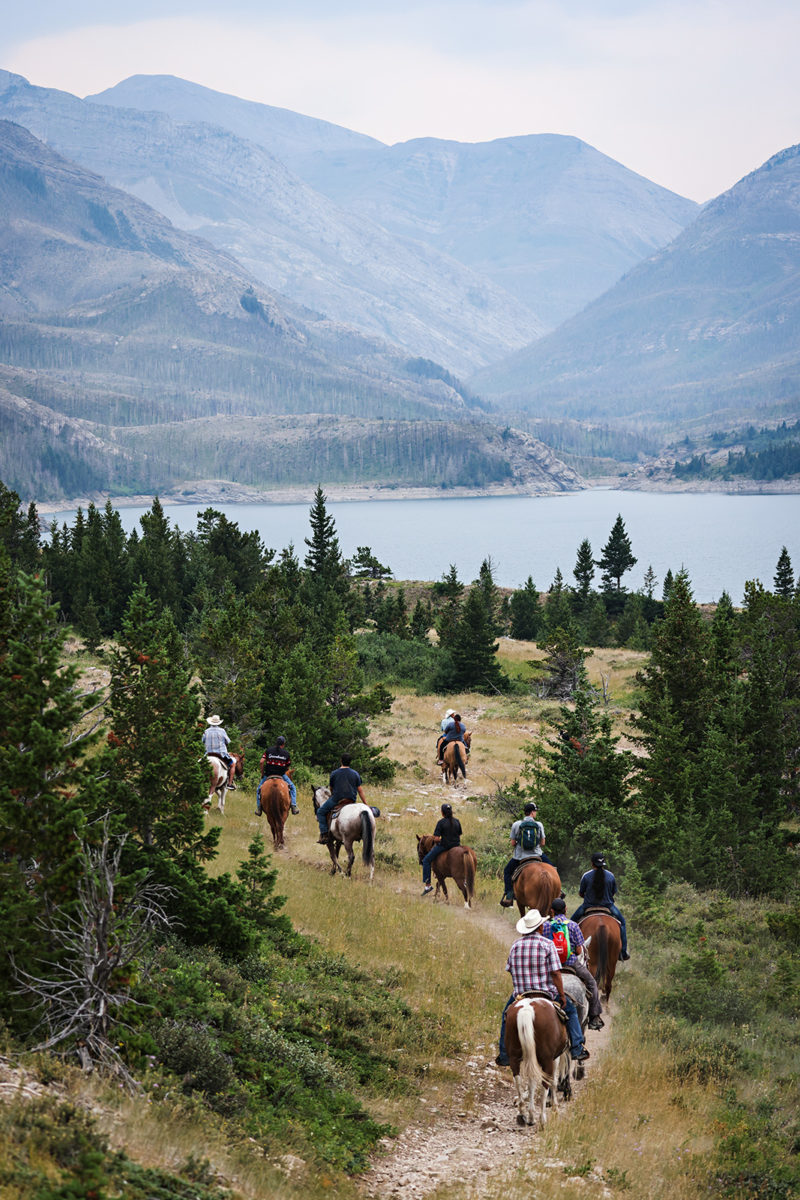
One of those young people is Jesse DesRosier, 32, who has dedicated most of his adult life to mounting a full-throated defense of his country, his culture, his community, and his heritage. It is, he says, the Blackfeet way. But it’s a way that was almost lost and forgotten.
As a Pikuni (or Blackfeet) warrior and veteran of the United States Marines Corps, DesRosier believes it is his duty and obligation to protect his country and lands, as well as to uphold the tribe’s traditions and culture while safeguarding its natural resources for future generations. Not only has DesRosier joined the ranks of Cuts Wood School teachers working to perpetuate Blackfeet heritage, including by teaching its language, but he’s marshaling resources to defend another critical aspect of Blackfeet identity — the natural landscape of the Badger-Two Medicine.
“The Badger-Two Medicine is our Vatican,” DesRosier said. “It’s a temple for us, and it remains under attack.”
For DesRosier, language represents a “crucial thread” to maintaining the tribe’s cultural identity and warding off attacks. However, a 1985 survey of Blackfeet members showed that essentially no one on the reservation under the age of 50 actively spoke Blackfoot, which DesRosier believes is critical to sustaining cultural practices.
“Language is the vehicle that drives our culture. It’s what makes us us. But people became so ashamed of their identity that if we weren’t creating new speakers today, the culture and the language would go away,” he said. “Culturally, we’ve reached a period now where it’s OK to be Native again. It’s cool to be Native. I would say that there’s a real reawakening.”
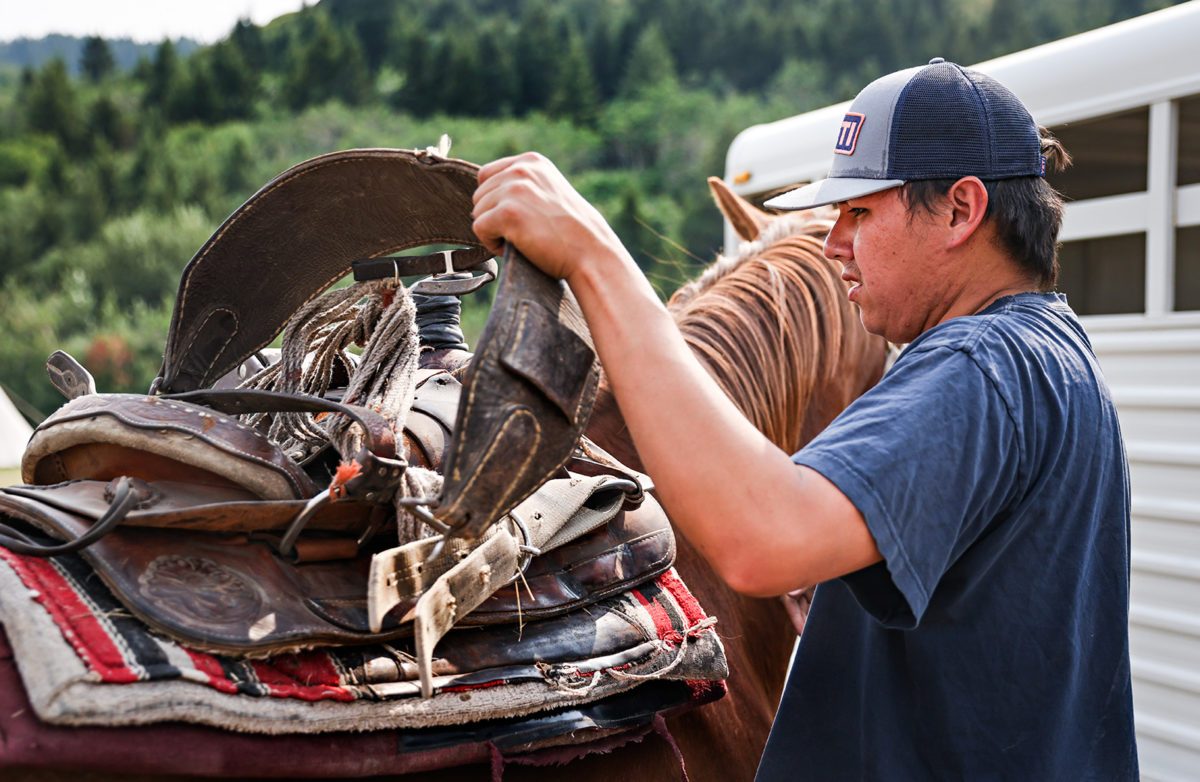
Although Tatsey ran the camp until 1999, the logistics became too much for him to maintain, and the gathering this summer was the first time he’d reestablished the practice in more than two decades — a testament to the cultural momentum the Blackfeet are marshaling, even if some anxiety surrounding the erosion and appropriation of traditional practices persists.
Gesturing to the young mothers feeding swaddled babies seated beside elders in wheelchairs, Termaine Edmo, the climate change coordinator for the Blackfeet Nation, said she fears a generational gulf will consume what remains of traditional Blackfeet cultural practices unless the tribe’s connection to the landscape is restored, such is the outsized role it plays in the Blackfeet creation story.
“I am trying to pass along what I know because my elders are sitting off to the sidelines and it’s our turn to step up,” Edmo said. “We must fall in love with the landscape again. We must protect it. To do anything less is culturally and morally irresponsible.”
Murray, the Blackfeet historian who grew up roaming the mountains of the Badger-Two Medicine, said the area is a traditional place of cultural power for the tribes, where Montana’s rolling prairie runs headlong into the Rocky Mountains, and is known as “Miistakis” — the “Backbone of the World” — where the Blackfeet creation story began. The Badger-Two Medicine cradles sacred mountains with revered names, Murray said, such as Morning Star, Scarface and Spotted Eagle — names drawn from the beginnings of Blackfeet culture.
“This is our cultural territory, it’s where our language began, our creation story,” Murray said. “We took our language from nature. And in one generation we could lose our culture. But there is a renaissance happening with the Blackfeet and that culture is starting to blossom again. We’ve been silent for a long time, but we stand together today.”
